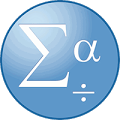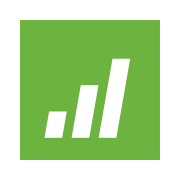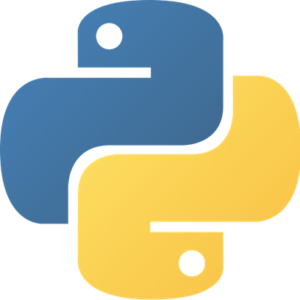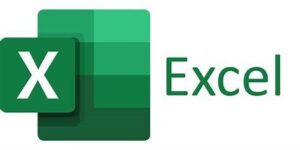If you buy using links on this page, we may earn a referral fee.
In today’s data-driven world, making informed decisions requires more than just collecting raw data. The ability to analyze, interpret, and extract valuable insights is what sets successful businesses and individuals apart. Statistical tools are at the heart of this process, transforming complex datasets into actionable information. Whether you’re looking to identify trends, forecast outcomes, or simply understand your data better, the right statistical tools can make all the difference.
From basic descriptive statistics to advanced predictive modeling, statistical tools are essential for turning numbers into narratives. However, with a wide range of tools available—each offering unique capabilities—it can be overwhelming to choose the one that best fits your needs. That’s where this guide comes in.
In this article, we’ll explore the top statistical tools available today, designed to help you streamline your analysis, automate repetitive tasks, and unlock the full potential of your data. Whether you’re a data scientist, business analyst, or an entrepreneur trying to harness data for better decisions, these tools will equip you with everything you need to stay ahead of the curve.
Why You Need Statistical Tools
Data analysis without the right tools is like trying to navigate through a foggy road without a map. Statistical tools not only provide clarity, but they also ensure that you’re making data-backed decisions rather than relying on gut feelings. These tools can help you:
- Identify Trends: Spot historical patterns and predict future outcomes.
- Quantify Relationships: Understand how different variables are related, helping you make informed predictions.
- Automate Processes: Save time by automating complex calculations and repetitive data analysis tasks.
- Visualize Data: Turn numbers into visuals that are easier to interpret and share with stakeholders.
The right statistical tool can take your data analysis efforts to the next level, regardless of your industry or skill level. Whether you’re handling financial reports, customer data, or scientific research, these tools are designed to give you deeper insights and allow for more effective decision-making.
Table of Contents
R
The Statistical Powerhouse for Data Analysis. R is a free, open-source programming language and software environment specifically designed for statistical computing and graphics. It is widely used among statisticians, data miners, and data scientists for data analysis and visualization.

Key Features of R:
- Comprehensive Statistical Techniques: R offers a wide range of statistical techniques, including linear and nonlinear modeling, classical statistical tests, time-series analysis, classification, and clustering
- Advanced Graphics: R provides extensive and flexible graphics capabilities for data visualization. Packages like ggplot enable the creation of sophisticated and customizable plots
- Rich Package Ecosystem: With thousands of packages available on CRAN, Bioconductor, and GitHub, R covers a vast array of data analysis and statistical tasks
- Data Handling: R includes numerous tools and packages for importing, cleaning, and wrangling data, making it a versatile tool for data analysis
- Programming Flexibility: R supports both functional and object-oriented programming, allowing users to create custom functions and objects
Pros
- Open-source: Free to use and continuously updated by a global community.
- Extensive Packages: Thousands of libraries for specialized statistical techniques.
- Visualization Capabilities: Powerful graphic libraries (e.g., ggplot2) for data visualization.
- Versatile: Suitable for various statistical analyses and data manipulation tasks.
- Strong Community Support: Abundant online resources, forums, and tutorials available.
Cons
- Steep Learning Curve: Requires programming knowledge, which may be challenging for beginners.
- Performance Issues: Can be slower with very large datasets compared to other tools.
- Less User-Friendly: Command-line interface may be less intuitive than GUI-based software.
Pricing
R is completely free to use. There are no licensing fees, making it an economical choice for individuals and organizations alike.
Unlock the power of data with R, the ultimate tool for statistical analysis and visualization. Whether you’re a seasoned data scientist or just starting out, R’s comprehensive features, rich package ecosystem, and advanced graphics capabilities will elevate your data analysis to new heights.
SPSS
User-friendly software for social science research. SPSS (Statistical Package for the Social Sciences) is a powerful software suite used for statistical analysis in social science, business, health, and many other fields. Developed by IBM, SPSS is known for its user-friendly interface and robust analytical capabilities, making it a popular choice among researchers and data analysts.

Key Features of SPSS:
- Comprehensive Statistical Analysis: Offers a wide range of statistical tests and procedures, including descriptive statistics, ANOVA, regression, and more.
- Data Management: Efficiently handles data preparation, cleaning, and transformation.
- Graphical Representation: Provides advanced charting and graphing capabilities to visualize data insights.
- Customizable Interface: Tailored functionality for different skill levels, from beginners to advanced users.
- Integration: Seamlessly integrates with other IBM products and various data sources.
Pros
- User-Friendly Interface: Intuitive GUI makes it accessible for non-programmers.
- Comprehensive Documentation: Extensive resources and user guides available.
- Robust Statistical Tests: Supports a wide range of statistical techniques.
- Good for Survey Analysis: Specifically designed for social science research.
- Data Management Tools: Easy data manipulation and preparation features.
Cons
- Costly Licenses: Expensive compared to open-source alternatives.
- Limited Customization: Less flexibility for custom analyses than programming-based tools.
- Slow Updates: May lag in implementing the latest statistical methods.
Pricing
SPSS offers various pricing plans, including monthly and annual subscription.
The base version starts at approximately $99 per month.
There are also perpetual and term licenses available, with different editions offering varying levels of functionality.
Empower your data analysis with SPSS. Trusted by researchers and professionals worldwide, SPSS combines an intuitive interface with powerful statistical capabilities. From detailed data management to advanced statistical tests and stunning visualizations, SPSS is your go-to tool for reliable and accurate data insights. Whether you’re conducting academic research or driving business decisions, SPSS offers the precision and ease you need to turn data into actionable knowledge.
STATA
Econometrics and social science statistical analysis. Stata is a comprehensive data analysis software that offers a wide range of statistical tools for data manipulation, visualization, and reporting. It is widely used in various fields such as economics, sociology, epidemiology, and political science due to its robust capabilities and user-friendly interface.

Key Features of Trifacta:
- Data Manipulation: Easily manage and manipulate datasets with commands for merging, sorting, and reshaping data.
- Statistical Analysis: Perform a variety of statistical tests and models, including linear and logistic regression, ANOVA, and survival analysis.
- Data Visualization: Create high-quality graphs and charts with an integrated graph editor.
- Reproducibility: Generate reproducible research with log files and script automation.
- Programming: Utilize Stata’s programming language, Mata, for advanced matrix operations and custom functions.
- Integration: Embed Python code and integrate with other programming languages like C, C++, and Java.
Pros
- Integrated Environment: Combines data management, statistical analysis, and graphics in one package.
- Efficient with Large Datasets: Optimized for handling big data and complex analyses.
- Excellent Documentation: Comprehensive help files and manuals for users.
- Strong Support for Panel Data: Particularly useful for time series and longitudinal data.
- User-Friendly Commands: Streamlined syntax makes it accessible for new users.
Cons
- Cost: Licenses can be expensive, especially for individual users.
- Limited Graphics Options: Less flexible in visualization compared to R.
- Less Community Support: Smaller user base compared to R or SPSS, which may limit online resources.
Pricing
Annual License: Starts at approximately $765 per year
Perpetual License: One-time purchase options are available, but pricing varies based on the version and user type
Free Trial: Stata offers a free trial for users to explore its features before committing to a purchase
Stata’s intuitive interface and robust statistical tools make it the perfect choice for researchers and analysts across various fields. From data manipulation to advanced statistical modeling and stunning visualizations, Stata handles it all with speed and precision. While it comes with a price tag, the investment is worth it for the comprehensive features and strong community support.
MATLAB
Numerical modelling and complex data analysis. MATLAB, developed by MathWorks, is a high-level programming environment designed for numerical computing, data analysis, and visualization. It is widely used in engineering, scientific research, and academia for developing algorithms, creating models, and analyzing data.

Key Features of Trifacta:
- Extensive Statistical Functions: MATLAB offers a wide range of statistical functions for data analysis, including descriptive statistics, hypothesis testing, regression analysis, and more
- Advanced Data Visualization: With built-in functions for creating 2D and 3D plots, MATLAB allows users to visualize data in various formats, such as line plots, histograms, scatter plots, and surface plots
- Toolboxes and Add-Ons: MATLAB’s functionality can be extended with numerous toolboxes for specific applications, such as signal processing, image processing, machine learning, and computational finance
- Interactive Environment: MATLAB provides an interactive environment for iterative exploration, design, and problem-solving, making it easy to test and refine algorithms
- Integration with Other Languages: MATLAB can integrate with other programming languages like C, C++, Java, and Python, allowing for greater flexibility and interoperability
Pros
- Powerful Computational Tools: Excellent for matrix operations and numerical analysis.
- Customizable: Users can create custom functions and scripts for specific tasks.
- Advanced Visualization: High-quality 2D and 3D plotting capabilities.
- Integration with Other Languages: Easily integrates with languages like C/C++ and Python.
- Strong in Engineering Applications: Widely used in engineering and applied mathematics
Cons
- Expensive Licenses: Can be a significant investment for individual users or small organizations.
- Steeper Learning Curve: Requires programming knowledge and experience.
- Less Focus on Statistics: Primarily a computational tool; may lack some advanced statistical features.
Pricing
MATLAB pricing starts at approximately $980 per year for individual licenses.
There are also options for perpetual licenses, academic discounts, and student versions at reduced prices
Experience the power of MATLAB, the ultimate tool for data analysis and visualization. With its extensive statistical functions, advanced visualization capabilities, and interactive environment, MATLAB empowers engineers, scientists, and researchers to turn data into actionable insights. Whether you’re developing complex algorithms or visualizing data in stunning 3D plots, MATLAB’s versatility and performance make it an indispensable tool.
Jamovi
User-Friendly Statistical Analysis and Data Visualization. Jamovi is a free and open-source statistical software designed for ease of use in data analysis and visualization. Built on the R programming language, it provides a powerful and intuitive platform for researchers, educators, and students. Jamovi is ideal for performing statistical analyses without the steep learning curve often associated with traditional statistical software

Key Features of Trifacta:
- Extensive Statistical Functions: Jamovi includes a comprehensive suite of statistical tests and models, such as t-tests, ANOVA, regression, and non-parametric tests, making it suitable for various research applications.
- Interactive and Intuitive Interface: The user-friendly drag-and-drop interface allows users to easily import data, perform analyses, and visualize results in real time without needing to write code.
- Built-in Data Visualization: Jamovi provides a variety of built-in plotting options, including histograms, box plots, and scatter plots, enabling users to visualize data effortlessly and gain insights quickly.
- Modules and Extensions: Users can enhance Jamovi’s functionality through a range of community-developed modules and R-based extensions, allowing for customized analyses tailored to specific research needs.
- Real-Time Results: As changes are made to data or analysis settings, Jamovi automatically updates the results, providing instant feedback and facilitating an iterative approach to data exploration.
Pros
- Free and Open-Source: Cost-effective alternative with no licensing fees.
- User-Friendly Interface: Intuitive GUI similar to SPSS, ideal for beginners.
- Real-Time Analysis: Instant feedback on data changes and statistical results.
- Extensible with R: Users can integrate R scripts for advanced analyses.
- Active Development: Continuously updated with new features and improvements.
Cons
- Limited Advanced Features: May not have as many statistical options as more established tools.
- Smaller User Base: Fewer resources and community support compared to R or SPSS.
- Performance Issues: Can struggle with very large datasets compared to MATLAB or STATA.
Pricing
Jamovi is completely free, offering an open-source solution for statistical analysis without the need for costly licenses.
Experience the power of Jamovi, the ultimate tool for accessible statistical analysis and visualization. With its extensive range of built-in functions, intuitive interface, and real-time results, Jamovi empowers researchers, educators, and students to analyze data effectively and efficiently. Whether you’re performing basic statistical tests or exploring complex datasets, Jamovi’s flexibility and user-friendly design make it an invaluable resource for turning data into actionable insights.
Minitab
Quality control and process improvement analysis. Minitab is a powerful statistical software designed for data analysis, quality improvement, and process optimization. It is widely used in various industries, including manufacturing, healthcare, and education, to analyze data and make informed decisions.

Key Features of Minitab:
- Statistical Tools: Perform a wide range of statistical analyses, including t-tests, ANOVA, regression, and more
- Data Importing: Easily import data from various sources, including Excel, CSV, and databases
- Data Manipulation: Seamlessly manipulate data with tools for sorting, filtering, and transforming datasets
- Graphical Analysis: Create high-quality graphs and control charts to visualize data insights
- Minitab Assistant: A guided feature that helps users perform analyses and interpret results
- Process Improvement Tools: Utilize tools like process mapping, value stream mapping, and Monte Carlo simulation for process optimization
- Real-Time Insights: Monitor statistics in real-time with instant insights displayed on the dashboard
Pros
- User-Friendly Interface: Intuitive design makes it accessible for beginners.
- Comprehensive Statistical Functions: Offers a wide range of built-in statistical tests.
- Quality Control Tools: Excellent for Six Sigma and quality improvement projects.
- Data Visualization: Easy to create graphs and charts for data interpretation.
- Training Resources: Abundant tutorials and support available for users.
Cons
- Cost: Licensing can be expensive for small businesses.
- Limited Customization: Less flexibility for custom programming compared to Python.
- Windows-Only: Primarily designed for Windows, limiting accessibility for Mac users.
Pricing
Annual License: Starts at approximately $1,595 per year.
Perpetual License: One-time purchase options are available, but pricing varies based on the version and user type.
Free Trial: Minitab offers a free trial for users to explore its features before committing to a purchase
This powerful statistical software offers a comprehensive suite of tools for data analysis, quality improvement, and process optimization. Whether you’re in manufacturing, healthcare, or education, Minitab’s intuitive interface and guided features make it easy to perform complex analyses and visualize data insights. While it comes with a price tag, the investment is worth it for the robust capabilities and strong customer support.
Python
Versatile tool for data analysis and machine learning.Python is a versatile, open-source programming language widely used for statistical analysis and data science. Its simplicity and readability make it accessible to beginners, while its extensive libraries and frameworks cater to advanced analytical needs.

Key Features of Python:
- Extensive Libraries: Python boasts powerful libraries like NumPy, pandas, SciPy, and statsmodels for statistical analysis, data manipulation, and scientific computing.
- Data Visualization: Libraries such as Matplotlib, Seaborn, and Plotly enable the creation of detailed and interactive visualizations.
- Machine Learning: Integration with machine learning libraries like scikit-learn, TensorFlow, and PyTorch for predictive analytics and model building.
- Data Handling: Efficient handling of large datasets with tools like Dask and PySpark.
- Community Support: A large, active community that continuously contributes to the development of new tools and libraries.
Pros
- Versatility: Supports various statistical libraries (e.g., NumPy, SciPy, pandas).
- Open Source: Free to use and has a large community for support.
- Extensive Libraries: Many libraries for advanced analytics and machine learning.
- Integration: Easily integrates with other tools and platforms.
- Customizable: Highly customizable for specific statistical needs.
Cons
- Steeper Learning Curve: Requires programming knowledge, which may intimidate some users.
- Performance: Slower for very large datasets compared to some specialized tools.
- Limited Built-In Graphs: Requires additional libraries for advanced data visualization.
Pricing
Annual License: Python is open-source and free to use. However, some integrated development environments (IDEs) and additional tools may have associated costs.
As a leading tool in the world of data analysis, Python combines simplicity with robust capabilities. From handling massive datasets to crafting intricate visualizations, Python’s extensive libraries and active community support make it an indispensable asset for data analysts. Whether you’re just starting or looking to enhance your analytical prowess, Python offers the flexibility and power to transform your data into actionable insights—all at no cost.
SAS
Comprehensive analytics for large-scale data processing. SAS (Statistical Analysis System) is a comprehensive software suite developed by the SAS Institute, designed for advanced analytics, multivariate analysis, business intelligence, and data management. It is widely recognized for its robust capabilities in handling large datasets and performing complex statistical analyses.

Key Features of SAS:
- Advanced Analytics: Perform predictive analytics, machine learning, and statistical analysis.
- Data Management: Efficiently manage and manipulate large datasets.
- Business Intelligence: Generate detailed reports and visualizations.
- Integration: Seamlessly integrates with various data sources and platforms.
- Customizable: Offers extensive customization options through its programming language.
Pros
- Robust Analytics: Strong capabilities for advanced analytics and data management.
- Enterprise Solutions: Designed for large organizations with complex data needs.
- Comprehensive Documentation: Extensive support and documentation available.
- Security Features: Strong data security and compliance capabilities.
- Integrated Solutions: Combines analytics, data management, and business intelligence.
Cons
- Cost: High licensing fees can be prohibitive for smaller businesses.
- Complexity: Can be overwhelming for new users due to its complexity.
- Less Community Support: Smaller user community compared to open-source alternatives.
Pricing
SAS pricing varies based on the specific modules and user requirements. It typically involves a significant investment, with costs tailored to enterprise needs. For precise pricing, it’s best to contact SAS directly for a quote.
SAS is a powerful and reliable tool for statistical analysis, offering a wide range of features that cater to both simple and complex analytical needs. While it comes with a higher cost and a steeper learning curve, its robust capabilities, excellent customer support, and industry acceptance make it a valuable asset for organizations looking to leverage data for strategic insights
Excel
Basic statistical functions for simple data manipulation. Microsoft Excel is a versatile tool widely used for statistical analysis and data management. Its user-friendly interface and powerful features make it a go-to choice for data analysts across various industries.

Key Features of Excel:
- Pivot Tables: Easily summarize, analyze, explore, and present data.
- Data Visualization: Create charts, graphs, and dashboards to visualize data trends.
- Formulas and Functions: Utilize a vast library of built-in functions for statistical calculations.
- Data Cleaning: Tools for sorting, filtering, and removing duplicates.
- Solver Add-in: Perform optimization and solve complex problems.
- Conditional Formatting: Highlight data points that meet specific criteria.
Pros
- Widely Used: Familiar interface for most users and organizations.
- Basic Statistical Functions: Offers essential statistical functions and tools.
- Data Visualization: Easily create charts and graphs for presentations.
- Integration with Other Software: Can easily import/export data to/from other tools.
- Accessibility: Available on multiple platforms, including web and mobile.
Cons
- Limited Advanced Features: Lacks capabilities for complex statistical analyses.
- Scalability Issues: Performance can degrade with large datasets.
- Error-Prone: Manual data entry can lead to errors in calculations.
Pricing
Microsoft Excel is available through various Office 365 subscription plans:
Microsoft 365 Personal: €69.00/year Microsoft 365 Family: €99.00/year (up to 6 users).
Microsoft 365 Business Basic: €10/user/month.
Microsoft 365 Business Standard: €180/user/month.
Microsoft Excel is a powerful and accessible tool for statistical analysis, offering a range of features that cater to both novice and experienced data analysts. While it may have limitations with very large datasets and advanced statistical functions, its ease of use, integration capabilities, and strong visualization tools make it an essential part of any data analyst’s toolkit.
Tableau
Data visualization with built-in statistical functions. Tableau is a powerful data visualization and business intelligence tool designed to help users analyze and visualize data in an intuitive and interactive way. It’s widely used across various industries for its ability to transform raw data into meaningful insights.

Key Features of Minitab:
- Intuitive User Interface: Tableau’s drag-and-drop interface makes it easy for users to create interactive visualizations without extensive technical skills
- Real-Time Data Exploration: Users can explore data in real-time, making it easier to identify trends and patterns as they emerge
- Advanced Analytics Integration: Tableau integrates seamlessly with advanced analytics tools like Python and R, allowing for sophisticated data analysis and modeling
- Mobile Access: Tableau’s responsive design ensures that dashboards are accessible and functional on mobile devices
- Data Handling: It efficiently manages large datasets, ensuring high performance even with substantial volumes of data
Pros
- Powerful Data Visualization: Excellent for creating interactive dashboards and visual analytics.
- User-Friendly Interface: Intuitive drag-and-drop functionality for ease of use.
- Real-Time Data Analysis: Connects to various data sources for real-time insights.
- Collaboration Features: Facilitates sharing and collaboration among users.
- Strong Community: Extensive resources and community support available.
Cons
- Cost: High licensing fees, particularly for the enterprise version.
- Limited Statistical Functions: Not designed for in-depth statistical analysis.
- Performance: Can be slow with large datasets or complex visualizations.
Pricing
Tableau offers three main pricing tiers:
Creator: $75 per user per month, includes comprehensive analytics tools.
Explorer: $42 per user per month, ideal for self-service analytics.
Viewer: $15 per user per month, for users who need to view and interact with dashboards.
Imagine using Tableau to create an interactive dashboard for tracking the environmental impact of your company’s operations. By integrating real-time data from various sources, you can visualize carbon emissions, energy consumption, and waste management metrics. This dashboard can help your team identify areas for improvement and make data-driven decisions to enhance sustainability efforts.


